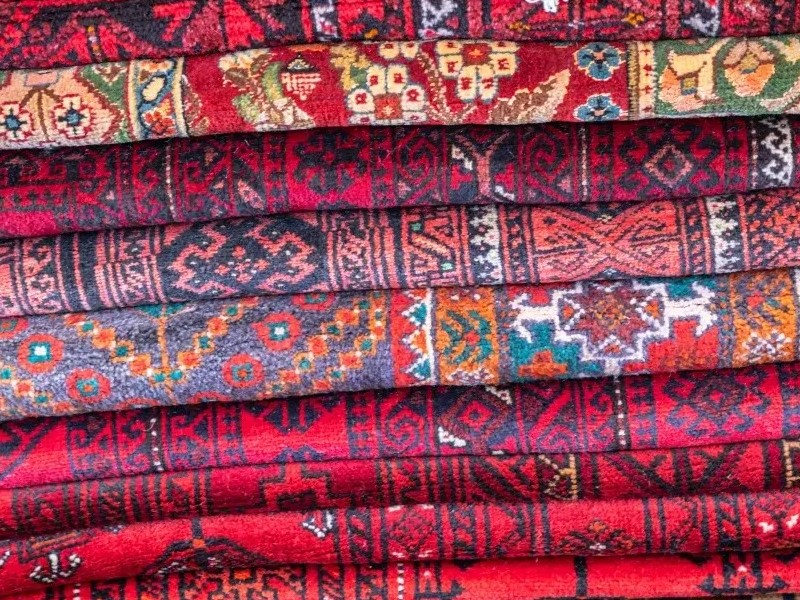Iranian silk carpets are masterpieces of artistry and craftsmanship, celebrated worldwide for their intricate designs, luxurious materials, and cultural significance. Rooted in a tradition over 2,500 years old, these carpets flourished during the Safavid dynasty and remain a symbol of Persian heritage. Typically woven with fine silk for the warp, weft, or pile, they exhibit a luminous sheen, softness, and exceptional detail. The designs often feature floral motifs, medallions, and arabesques, reflecting Persian culture and mythology. Produced in cities like Qom, Kashan, and Tabriz, these carpets are distinguished by their high knot density, often exceeding 1,000 knots per square inch, and vibrant colors derived from natural dyes. Valued as collectibles and investments, they are prized for their durability and timeless beauty. However, due to their delicate nature, proper care, including protection from sunlight and moisture, is essential to preserve their exquisite quality. Why should we buy Iranian silk carpet? Here are some reasons to follow more:
how Famous Regions of Silk Carpets distinct from each other?
As you know and we said in the previous pages of Diooni, Iranian silk carpets have different designs and patterns, each city in Iran has its own carpet. These designs and patterns are different depending on the type of geographical region in terms of silk quality and carpet texture. Here are some famous regions, we show you the differences:
- Qom carpets often feature intricate floral patterns, medallions, and arabesques, with a focus on symmetry and elegance, and known for bright, vibrant tones, including gold, ivory, and red. Pure silk is predominantly used, resulting in carpets with an incredibly fine texture and luxurious sheen in this type of carpet and they are often smaller, making them ideal as decorative pieces or wall hangings.
- Kashan carpets are famous for their classic Persian medallion designs, surrounded by elaborate floral or vine motifs, they are often utilize rich shades like deep blues, reds, and ivory, with a slightly more muted palette compared to Qom. Kashan carpets are known for their traditional elegance and larger sizes, making them popular for floor use and High but typically lower than Qom carpets, allowing for excellent detail without being overly delicate.
- Tabriz carpets are versatile, with designs that appeal to both traditional and modern tastes, often seen as functional art pieces. These types of carpets are High but varies depending on the specific design, with an emphasis on practicality as well as beauty. Tabriz carpets are made of primarily high-quality wool, though silk is used for more luxurious carpets. Some carpets blend silk into the wool for accents.

How can we visit examples of Iranian silk carpets?
Depend on your location of living today you can visit websites or arrive personally in specific spot to touch and visit these carpets. If youre living in Iran you can visit carpet galleries and stores, look for specialized Persian or Oriental carpet stores in your area. You are able to visit many carpet galleries showcase Iranian silk carpets, they are often providing detailed information about their origin and craftsmanship. remember some galleries offer virtual tours, allowing you to browse their collections online.
Every year carpet exhibitions will be held in a specific location, persian carpet exhibitions are held worldwide, showcasing a variety of handmade Iranian carpets, including silk ones.
If you are not in Iran and you don’t have an access to these trade shows or exhibitions, you can search online! By your smart phone you van explore and surf the internet or social medias like Pinterest. Some platforms allow for video consultations to view carpets in detail.
Or you can contact Iranian carpet exporters. Many carpet exporters in Iran specialize in providing samples and showcasing their collections online, they often share high-quality images, videos, and even ship samples upon request.
our services:

A guide for finding silk carpet suppliers
To find a reliable supplier of Persian silk carpets, begin by researching specialized stores or online platforms, which often feature established sellers with verified reviews. Consider sourcing directly from Iran, particularly regions like Qom, Tabriz, or Kashan, renowned for their silk carpets, or connect with exporters who ship globally. Verify authenticity by requesting certificates and checking customer testimonials, and consider suppliers who are members of trade associations like the Carpet Exporters Association of Iran. Attending exhibitions or visiting galleries can help you inspect carpets firsthand, while wholesalers often provide competitive pricing for bulk purchases. Always request detailed photos or videos to evaluate quality, focusing on knot density, material composition, and dye sources, and ensure there’s a clear return policy, especially for online transactions. Consulting an expert or appraiser can also ensure the carpet’s quality and value before making a purchase.
[read more: Iranian silk carpets in our lives ]

